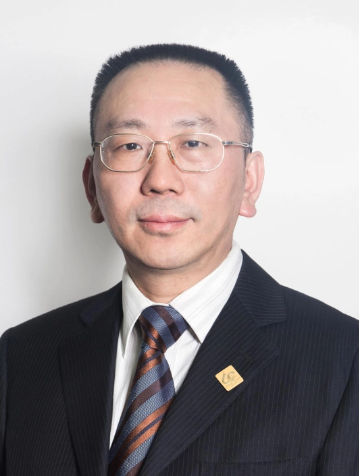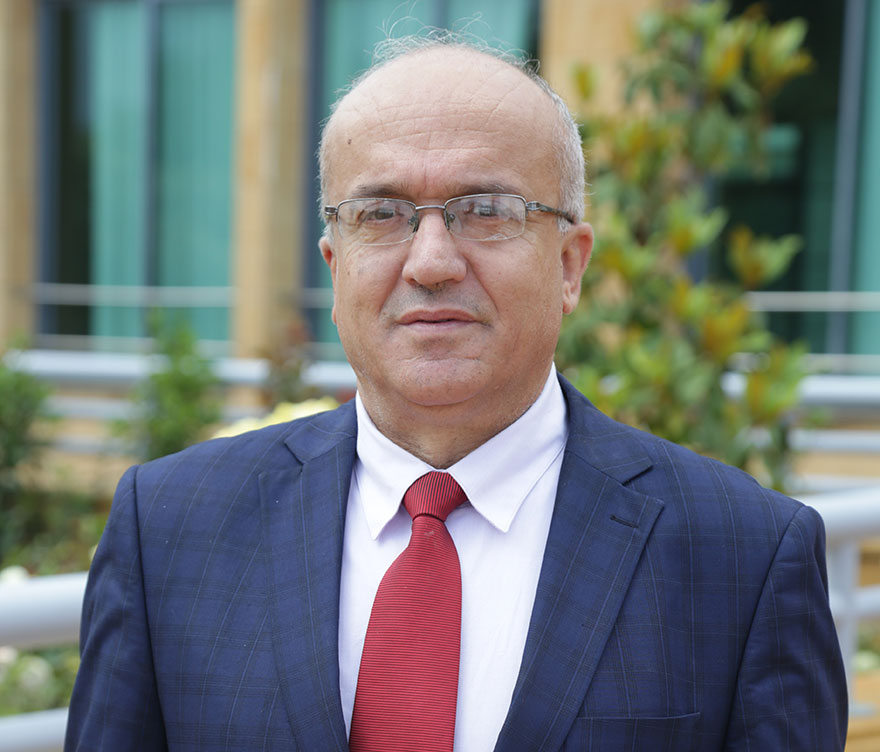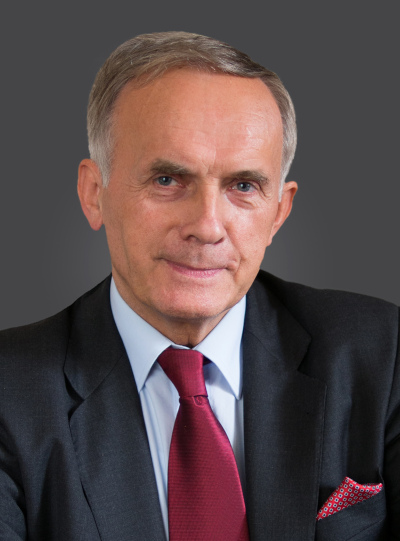Keynote Speaker Ⅰ

Zhengyuan Xiong | 熊正元
广州市市政工程设计研究总院有限公司 董事长
Chairman of Guangzhou Municipal Engineering Design and Research Institute Co., Ltd.
题目:城市土地利用与交通系统一体化规划设计
摘要:城市在进行规划设计的过程中,土地规划和交通规划是比较重要的两方面,这两部分规划的科学合理性将直接影响整个城市的发展走向以及经济繁荣程度。本文从城市土地利用与交通系统一体化规划设计作为切入点,根据目前已有的TOD开发实践案例,分析城市土地利用与交通系统一体化规划设计的实施内容及实施效益等,结合城市发展趋势,总结出城市土地利用与交通系统一体化规划设计的重点,为促进城市可持续发展提出相关建议。
Speech Title: Integrated planning and design of urban land use and transportation system
Abstract: In the process of city planning and design, land planning and transportation planning are two relatively important aspects. The scientific rationality of these two parts of planning will directly affect the development trend of the entire city and the degree of economic prosperity. This article takes the integrated planning and design of urban land use and transportation systems as the starting point, and analyzes the implementation content and implementation benefits of integrated planning and design of urban land use and transportation systems based on existing TOD development practice cases. Combined with urban development trends, This paper summarizes the key points of integrated planning and design of urban land use and transportation systems, and provides relevant suggestions for promoting sustainable urban development.
简介:现任广州市市政工程设计研究总院有限公司董事长,教授级高级工程师,从事路桥隧工程设计与研究三十余年。作为主要设计人完成了全国第一座现代化悬索桥—汕头海湾特大桥的设计,主持和设计了鹤洞大桥、明珠湾大桥等近20座大桥、特大桥,还主持完成了华南快速一期、内环路系统工程等多条快速路设计,总里程达100多公里,含有40余座立交;同时,完成了洲头咀、如意坊隧道等系列过江通道的设计。荣获“联合国灯塔奖”1项、“中国土木工程詹天佑奖”1项、“国家优质工程奖”1项、“国家优质工程银质奖1项”、“全国优秀工程设计铜质奖”1项、“全国优秀勘察设计奖一、二等奖”6项、“广东省优秀勘察设计、咨询奖一、二等奖”19项,得到了业界的广泛认可。
Keynote Speaker Ⅱ

Jamal Khatib
Fellow FICE, Fellow FHEA
Beirut Arab University (BAU)-Lebanon & University of Wolverhampton, UK
Speech Title: Metakaolin Utilisation in Concrete.
Abstract: The cement industry contributes about 8% of global carbon dioxide (CO2) emission. This is partly due to the calcining temperature and partly due to the decomposition of limestone. Therefore reducing the amount of cement by partial substitution with less energy intensive materials is advantageous. This lecture will examine the use of metakaolin as partial substitution of cement and its effect on the cementititious systems (i.e. paste, mortar, concrete). Metakaolin is produced at a temperature of 700-900oC which is nearly half of that used for cement. The reported results suggest that the concrete properties are improved when cement is replaced with metakaolin. Depending upon the purity of metakaolin, an increase in compressive strength of up to 40% can be obtained when appropriated amount of metakaolin is included. The presence of metakaolin has led to refinement in the pore structure and improvement in sulphate resistance. It is expected that other properties will be improved such as alkali aggregate reaction. The use of metakaolin as a material in construction can reduce the carbon footprint due to construction activities.
Bio: Jamal Khatib, is presently Professor of Civil Engineering at the Faculty Engineering at Beirut Arab University (BAU)-Lebanon and Emeritus Professor of the University of Wolverhampton (UoW) – UK. In 2010, he achieved the Chartered Engineer status of the Institution of Civil Engineer (ICE), the European Engineer status (EUR ING) in 2015 and in 2016 he achieved the Fellowship status of the ICE. Areas of research specialism include a number of sustainable construction materials themes: a) use of waste in the production of construction materials, b) novel construction materials (e.g. metakaolin), c) concrete subjected to harsh environments, d) lightweight and self-compacting concrete and e) behaviour of structural materials. Prof Khatib was one of the early UK researchers who conducted research on metakaolin as partial substitution of cement and his publications in this area have been extensively cited. According to Stanford university classification, Prof Khatib was ranked as top 2% researchers in the world in the field of Building and Construction in 2020, 2021, 2022 and 2023. According to the ISI Web of Science and Scopus Prof Khatib has an H-index of 30 and 33 respectively. Microsoft Academic classified Prof Khatib as one of the top authors in cement (G-Index:18). According to Google scholar Prof. Khatib has over 11,000 citations and an H-index of 48. The products of his extensive research activities have been comprehensively disseminated through: over 600 refereed academic journal & conference papers, text books, abstracts, research seminars and workshops; articles and features. He acts as a reviewer to over 250 international academic journals, book publishers & others. Many papers were ranked as the top 25 articles. He sits on the technical committees of many international conferences. Publons (now Web of Science) classified Prof Khatib as one of the top 1% reviewers globally. He is an Editorial Board member of 10 academic Journals including the Editor-in-Chief and Associate Editor roles. Prof Khatib was a submitting member for the RAE/REF 1996 (USW), 2001 (SHU) & 2008/2014 (UoW) in the UK.
Keynote Speaker Ⅲ

Stanislaw Ledakowicz
Lodz University of Technology Faculty of Process & Environmental Engineering
Speech Title: LIFE CYCLE ASSESSMENT AS THE BEST INDICATOR OF CIRCULAR ECONOMY IN ENVIRONMENTAL ENGINEERING
Abstract:The Summit of Sustainable Development Goals (SDGs), which are a universal call to action to, protect the planet and improve our lives, took place in September 18-19 2023 in New York, under the auspices of the United Nations General Assembly. It aimed to catalyze renewed efforts towards accelerating progress on the SDGs. The 17 Goals were adopted by all UN Member States in 2015, as part of the 2030 Agenda for Sustainable Development, which set out a 15-year plan to achieve the Goals. But inequalities and climate change are threatening to undo the gains [1].The circular economy (CE) which refers to an economic model whose objective is to produce goods and services by limiting the consumption and waste of resources (raw materials, water, energy) as well as the production of waste, fits directly into the framework of SDGs. It is part of a global strategy that uses the principles of the green economy, industrial ecology, eco-design among others. The CE breaks with the linear economy model by proposing to transform waste into secondary raw materials for product design or other uses.It is necessary to develop appropriate tools in order to facilitate this transformation. While circular economy strategies can be implemented in various sectors such as industry, waste, energy and transportation, life cycle assessment (LCA) is required to optimize new systems [2]. There are various quantitative circularity indicators e.g. Material Circularity Indicator (MCI) - it is degree of the material flow's circularity on a scale of 0 to 1. However, MCI doesn't take into account the impact on environment. One of the interesting example is the comparison between PET and glass bottle, that has a significantly higher circularity than a PET one. However, when the environmental accounting was applied, the PET bottle shows lower environmental impact. This was due to the much higher contribution of the glass bottle production to global warming. The negative environmental impact of glass production is much higher than that of PET bottles.Over the past decades environmental accounting tools have been developed - these environmental accounting methods include: eecological footprints, like carbon footprint, water footprint, ecological pricing etc. However, a comprehensive, quantitative measure of sustainability is needed. The only appropriate evaluation method is provided by Life Cycle Engineering (LCE), which is a sustainability-oriented methodology, which takes into account the complex technical, environmental and economic impacts of life cycle decisions. Life cycle assessment is a standardized tool to evaluate the environmental impacts associated with all the stages of a product's life, which is from raw material extraction (“cradle”) through materials processing, manufacture, distribution, use and disposal (“grave”). Nowadays, LCA analysis is particularly important for emerging technologies that have not been tested in real operating conditions. The results of the analysis, which allow drawing conclusions at the design stage, are also of great importance. Consequently, LCA analysis is becoming an integral part of projects developing new technologies with market implementation potential. After a short presentation of the LCA methodology (Goals and Scope, Inventory Analysis, Impact Assessment, Interpretation) and the methods used (e.g. IPCC 2021, ReCiPe), as well as the software programs we apply, (GaBi and SimaPro) examples of specific applications will be presented. For example, aviation industry works to achieve its goal of net-zero carbon emissions by 2050. The development of hybrid-electric regional aircraft is seen as one of the key issue to success; development of new high-voltage technologies will help pave the way for future hybrid-electric platforms and reduce carbon footprint [3]. The environmental consequences of a material substitution decision can be also successfully assessed with life cycle assessment. Approximately 90% of the annual indium consumption accounts to transparent conducting oxide films (TCOs) in the form of indium tin oxides (ITOs). Today, ITOs are technologically entrenched in the commercial manufacture of components like flat panels displays, liquid crystal displays (LCDs), light emitting diodes (LEDs), touch screens and photovoltaic cells. Replacement of ITO by other materials like for example ZnO proved to be an optimal strategy towards minimization of the environmental impact of the TCOs [4].LCA methodology is widely applied as a decision making tool not only for support replacement of raw materials in different products but also for alternative synthesis methods.It is hoped that this presentation will make you aware of the necessity of using the Life Cycle Assessment method in making decisions regarding the choice of development path for a new product or process under development, thus contributing to the fulfillment of sustainable development goals.References[1] https://www.un.org/sustainabledevelopment/development-agenda/ (accessed Oct. 16,.2023)[2] Hauschild, M., Life cycle assessment: theory and practice. Springer International Publishing AG, 2018. https://en.wikipedia.org/wiki/Life-cycle_engineering#cite_note-:22-1 (accessed Feb. 28, 2023)[3] Hybrid ElectriC regional Aircraft distribution Technologies, HECATE PROJECT, https://cordis.europa.eu/project/id/101101961[4] Zieminska-Stolarska A., Barecka M., Zbicinski I., Effect of replacement of tin doped indium oxide (ITO) by ZnO: analysis of environmental impact categories, January 2017, E3S Web of Conferences, DOI: 10.1051/e3sconf/20171902026
Bio: Prof. Stanisław Ledakowicz became professor for chemical technology and biotechnology at TU Bergakademie Freiberg in Germany in 1993. In 1994 was conferred the title of a full professor in Poland. Since 1994 he has been university professor at Lodz University of Technology (TUL), being the head of Department of Bioprocess Engineering since 1995. He is a member of Editorial Boards of 4 scientific journals.The fields of his scientific interest are: chemical, biochemical and environmental engineering, and industrial biotechnology. He published over 700 publications, including 295 original papers in JCR journals, contributed to 30 monographs and holds 16 patents, participated in 4 industrial implementations. H-index is 40 and number of citations over 6500 according to Scopus. Being academic teacher he supervised 25 doctors, 4 of them are university professors. Dr. Aleksandra Ziemińska-StolarskaAleksandra Ziemińska-Stolarska works as an assistant professor in the Faculty of Process and Environmental Engineering at Lodz University of Technology. Research activity covers the area of Life Cycle Assessment analysis for new material design and technologies in the field of chemical and environmental engineering. Aleksandra Ziemińska-Stolarska oversees realization of three EU projects:HIPERION (2019-2023, Horizon 2020) „Hybrid Photovoltaics For Efficiency Record Using Integrated Optical Technology” Fibre4Yards (2021-2013, Horizon 2020) “FIBRE composite manufacturing technologies FOR the automation and modular construction in shipYARDS” HECATE (2023-2025, Horizon Europa) “Hybrid-ElectriC regional Aircraft distribution Technologies” Participated in 2 other projects where she dealt with the calculation of the carbon footprint. INREP (2015-2018, Horizon 2020) “Towards Indium Free TCOs” INVITES (2016-2019, NCBiR) “Innovative Equipment for Intensified Recovery of CO2 from Flue Gases”. Aleksandra Ziemińska-Stolarska is an author of the report on the Carbon Footprint of the Lodz University of Technology. Her scientific achievements are confirmed by 17 publications in scientific journals and over 20 speeches at Polish and foreign conferences.
More notable speakers will be updated soon...
Copyright ©2026 ICCAEE 2026 | All Rights Reserved.